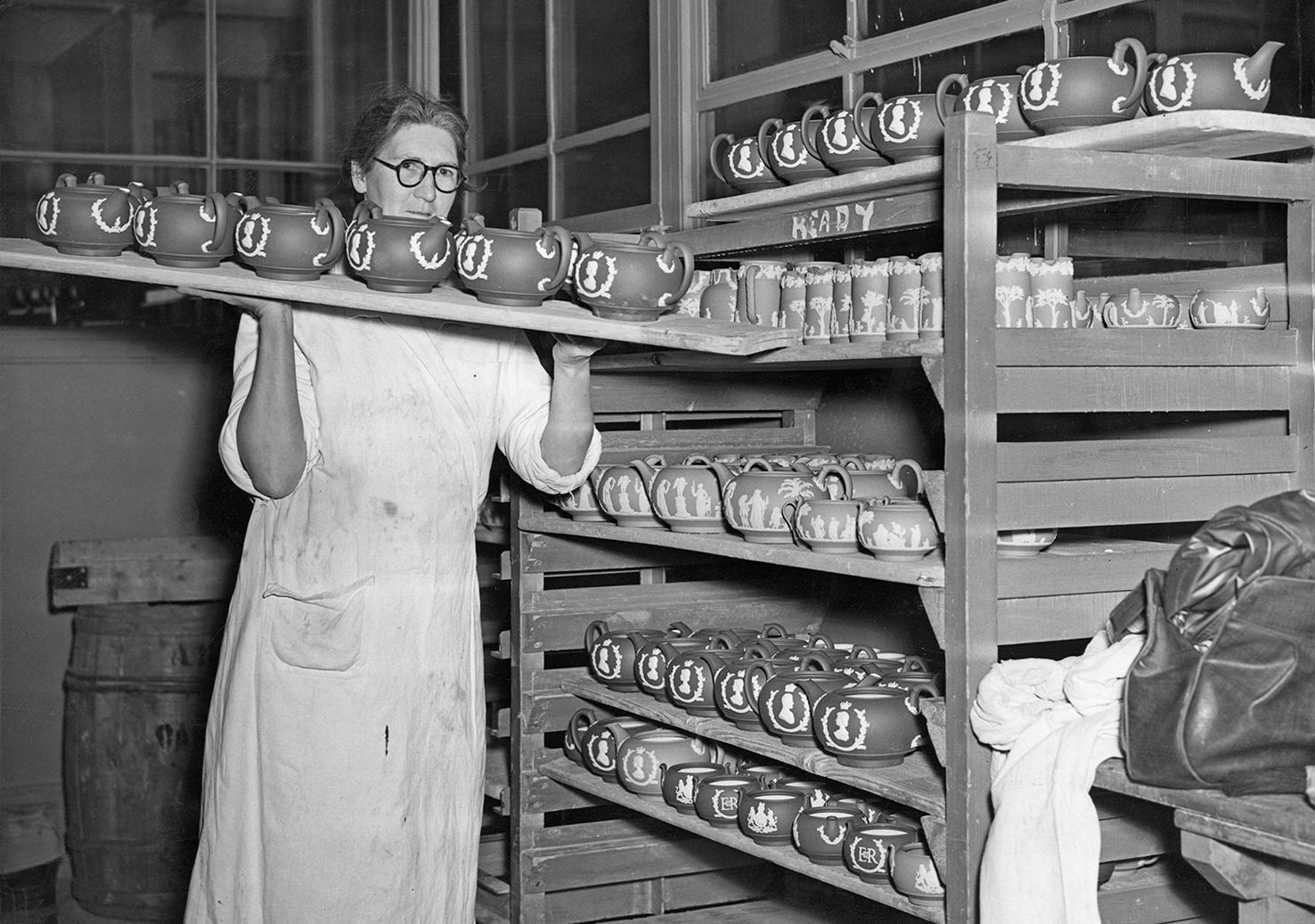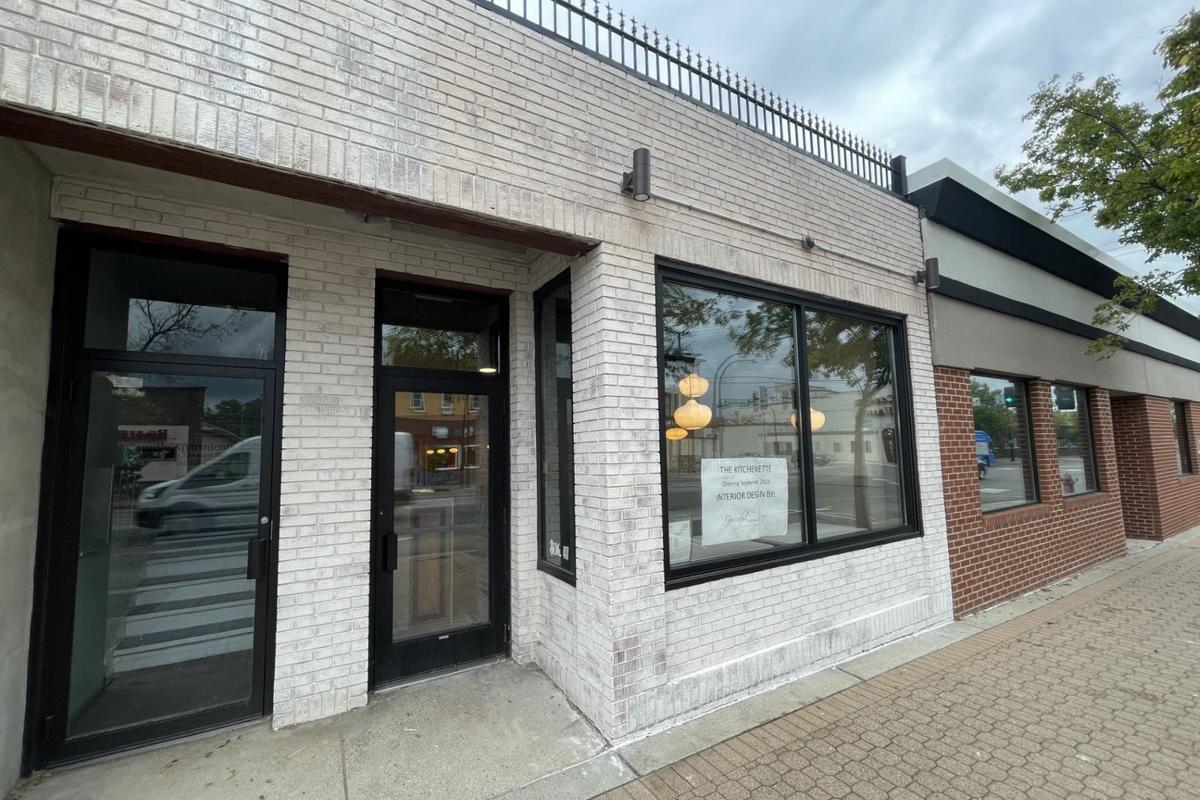By Susie Goldsbrough
Copyright newstatesman

“I love Stoke-on-Trent,” says Will Moorcroft, “but it’s so depressed.”
The Midlands city halfway between Birmingham and Manchester once burned red-hot with the brick-oven fires of Britain’s pottery industry. From the late 18th century, its teapots and soup tureens sailed west down the purpose-built Trent and Mersey Canal to Liverpool and then straight out into the Atlantic, to ornament the tea tables of distant shores. Back then, the potteries that gave Stoke its nickname were known not just for quality but collectible, innovative beauty. Here, Josiah Wedgwood perfected his cream-and-blue glazes; here, another Josiah, this one Spode, mixed bone into china; and here, Moorcroft’s grandfather covered his pots in intricate, hand-piped pomegranates, mushrooms and bluebells.
The potteries have inspired some of our great artists, from William Morris to Grayson Perry. Have a gander around London’s Victoria and Albert Museum today and you’ll see plenty of the fruits of Stoke’s former glory: a gleaming wall of Spode dinner plates made of delicate porcelain; a vast, prize-winning vase of Wedgwood’s famous blue jasperware whose beauty, according to the judges at Prince Albert’s Great Exhibition of 1851, “has never since been surpassed or equalled”.
If you’re from the Midlands, clay is probably in your bloodstream. No one in my family is quite able to remember why my Stafford grandmother’s middle name was Grindley, other than that she shared it with a local pottery.
But Stoke’s tableware has long since lost out in the global marketplace to cheaper east Asian mugs and bowls. Today, you can see the evidence of industrial decline in the city’s skyline: most of the hundreds of distinctive, fat-bellied brick bottle ovens that once punctured the clouds, puffing out coal fumes, are gone. The few that remain are part of museums or marooned incongruously in new housing developments, relics of a more prosperous time.
Instead, Britain’s ceramics industry has shifted towards industrial and high-tech products – bricks, artificial hips, even spacecraft – and dispersed across the country, away from Stoke. In 1984, there were 66 potteries in Staffordshire employing 300,000. Today only about 5,000 people in the potteries still make pots. The city’s most prominent employer has become Bet365.
In recent years, Vladimir Putin’s invasion of Ukraine has compounded ceramic troubles, as soaring gas prices walloped the energy-intensive industry. In 2025 alone, three historic Stoke potteries – Heraldic, Royal Staffordshire and Moorcroft – powered down their kilns and shut up shop.
Those that survive tend to specialise in high-end products – think of Emma Bridgewater, that polka-dotted pillar of the middle-class crockery cupboard – and supplement their incomes with museums and cafés, wringing the last pennies out of the glories of the past.
One brightly glazed spot amid the general gloom is Moorcroft, which went bust in April but six weeks later was bought by the founder’s grandson with the help of an anonymous local investor. Now 34 of the 51 staff who lost their jobs are back painting, piping and glazing the 112-year-old firm’s William Morris-style designs on to pottery. In the factory museum, I ogle an enormous vase from 1912, down which tumbles a mass of blooming purple wisteria.
Radiating enthusiasm in white shirtsleeves on a muggy August afternoon, the present Will Moorcroft, 55, shows me around the factory. Here, great slabs of clay are blended with water into “slip” in giant mixers, before being set in moulds, then shaved and sponged smooth. Next, the designs are inked onto partially dried pots and traced over (“tube lined”) with thin lines of clay, a highly skilled process that looks like icing a cake. Finally, the pot is painted, “biscuit fired” at 1,100°C, stamped, dipped in liquid glass and “gloss fired” for a shiny finish.
Despite the challenges, Moorcroft oozes optimism. “In times of hardship, my father always said to me, people will look to buy quality,” he says. Quality, of course, is code for costly: a large Moorcroft vase might go hundreds or even thousands of pounds. Such prices attract high-net buyers: “You’d be gobsmacked who collects it,” says Moorcroft with a salesman’s seduction. After a bit of prodding, I learn Rod Stewart is a fan.
But quality also means specialist human skill. At a makeshift desk in the company’s old canteen – they’re in the middle of transferring operations back to the original factory on Sandbach Road – Moorcroft’s head of design, Emma Bossons, is working quietly away on a wisteria bowl pattern, a twist on a classic model, dabbing a sketch with violet watercolour paint.
Bosson has been at the company for 29 years but that’s peanuts. Across the road in the convivial, notably female atmosphere of the decorating room, Wendy Thorne, 62, a softly spoken Stokie in a blue overall, smooths a layer of turquoise on to a big-bellied pot. She left school at 16, took two weeks holiday, then joined Moorcroft: this is her 46th year as a painter at the firm. “It is a lovely job,” she tells me. “You sit here, you’re painting something, you get something at the end of it. It’s very calming… I think sometimes we come to work for a rest.”
But skills such as Thorne’s are disappearing: her two grown-up kids work in IT and nursing, respectively. Forty-six years ago it was natural to leave school and get a job at a pottery but these days there are many more opportunities in online gambling for Stoke’s youngsters. Despite the industry’s less than rosy reputation – a 2023 report from the Gambling Commission estimated that over a million people in the UK had a gambling problem – most of the locals I speak to are positive about Bet365 and the prosperity it has brought to the city. But whatever you think of betting, it cannot provide the dextrous, precise skills of a potter like Thorne. That kind of historic Stoke craftmanship is becoming scarcer and scarcer.
So what’s to be done? Rob Flello, CEO of Ceramics UK, is incandescent at the lack of government support the industry has received during the energy crisis. “It’s almost like at every turn, the government is trying to destroy British industry,” he tells me matter-of-factly. Gas-based ceramics largely missed out on the government’s recent electricity price relief package but the Department for Business and Trade points out that unlike electricity, the wholesale price of gas in Britain remains comparable to the rest of Europe. However, Flello told me that Europe has the advantage of greater storage capacity, which enables it to manage volatile prices better.
The government could help tackle this disparity by investing in gas storage: but more importantly, suggests Nick O’Donovan, senior lecturer in political economy at nearby Keele University, it could reduce gas usage elsewhere in the UK economy. For example, replacing gas boilers with heat pumps would free up existing gas storage for the needs of sectors like ceramics that are likely to remain more fossil fuel-dependent for longer. This would help not just the ceramics industry but the broader green energy transition.
Decarbonisation is a thorny issue for an energy-intensive sector like pottery: at a recent net zero-themed event run by Ceramics UK, potters enthusiastically discussed hydrogen-powered kilns. However, such ideas might sound like a bit of a distant dream in Stoke given the straits the city’s potteries currently find themselves in. “This rugged, pott-making spot of earth,” as Josiah Wedgwood called it, faces an existential fight.



